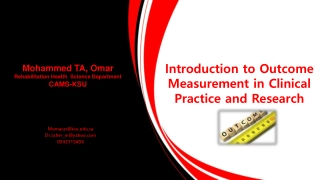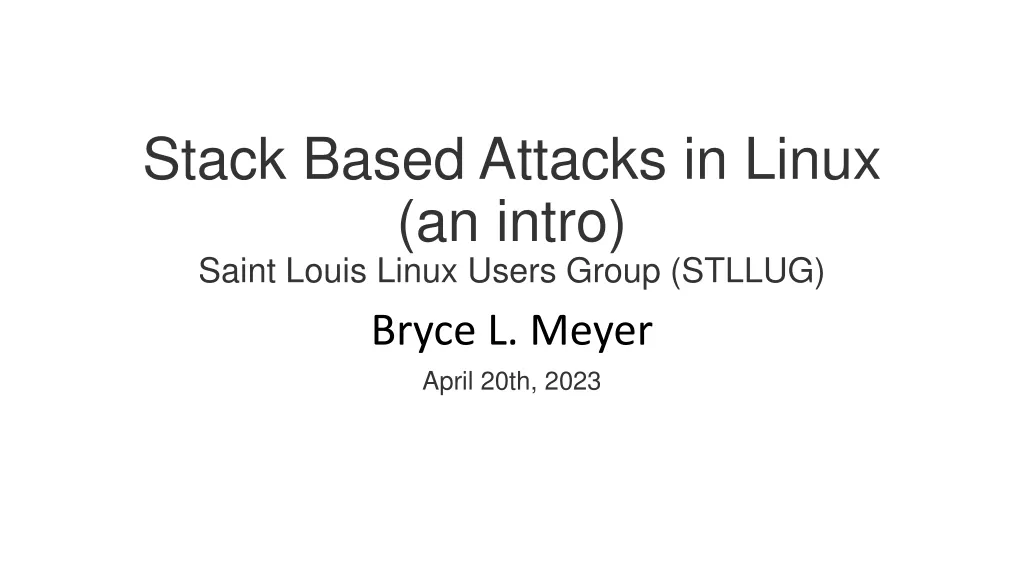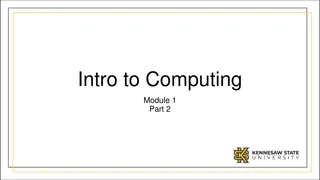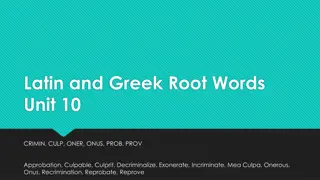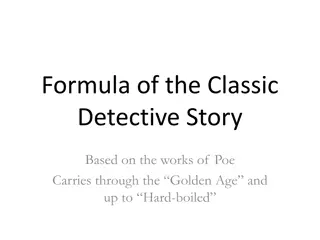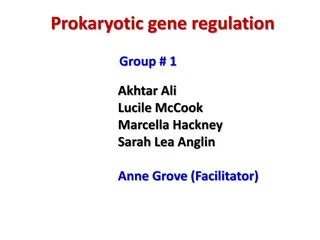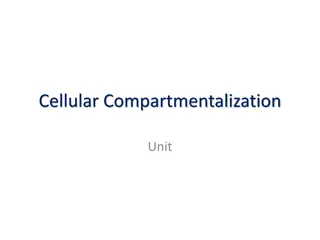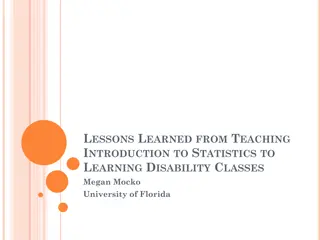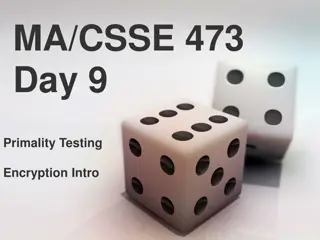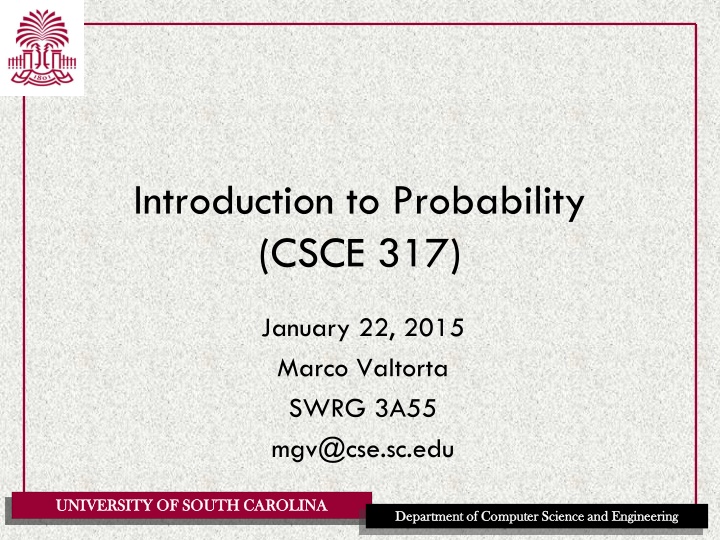
Probability Concepts Overview at University of South Carolina
Explore the fundamental concepts of probability, including Kolmogorov's axioms, models, conditional probabilities, and the classical approach, as presented in the Introduction to Probability course at the University of South Carolina's Department of Computer Science and Engineering.
Download Presentation

Please find below an Image/Link to download the presentation.
The content on the website is provided AS IS for your information and personal use only. It may not be sold, licensed, or shared on other websites without obtaining consent from the author. If you encounter any issues during the download, it is possible that the publisher has removed the file from their server.
You are allowed to download the files provided on this website for personal or commercial use, subject to the condition that they are used lawfully. All files are the property of their respective owners.
The content on the website is provided AS IS for your information and personal use only. It may not be sold, licensed, or shared on other websites without obtaining consent from the author.
E N D
Presentation Transcript
Introduction to Probability (CSCE 317) January 22, 2015 Marco Valtorta SWRG 3A55 mgv@cse.sc.edu UNIVERSITY OF SOUTH CAROLINA UNIVERSITY OF SOUTH CAROLINA Department of Computer Science and Engineering Department of Computer Science and Engineering
Purpose of the Introductory Slides Review the axioms of probability: Kolmogorov s axioms Review models of the axioms UNIVERSITY OF SOUTH CAROLINA UNIVERSITY OF SOUTH CAROLINA Department of Computer Science and Engineering Department of Computer Science and Engineering
Probabilities A set of events is a set of subsets of the set of sample points s.t: is an event, If E1and E2are events, then E1U E2is an event, If E is an event, then its complement is an event Let be a set of sample points (outcomes), F be a set of events relative to , and P a function that assigns a unique real number to each E in F . Suppose that P(E) >= 0 for all E in F P( ) = 1 If E1and E2are disjoint subsets of F , then P(E1V E2) = P(E1) + P(E2) Then, the triple ( , F ,P) is called a probability space, and P is called a probability measure on F UNIVERSITY OF SOUTH CAROLINA UNIVERSITY OF SOUTH CAROLINA Department of Computer Science and Engineering Department of Computer Science and Engineering
Conditional probabilities Let ( , F ,P) be a probability space and E1in F such that P(E1) > 0. Then for E2in F , the conditional probability of E2 given E1, which is denoted by P(E2| E1), is defined as follows: ( ) P E E = 1 2 ( | ) P E E 2 1 ( ) P E 1 UNIVERSITY OF SOUTH CAROLINA UNIVERSITY OF SOUTH CAROLINA Department of Computer Science and Engineering Department of Computer Science and Engineering
Models of the Axioms There are three major models (i.e., interpretations in which the axioms are true) of the axioms of Kolmogorov and of the definition of conditional probability. The classical approach The limiting frequency approach The subjective (Bayesian) approach UNIVERSITY OF SOUTH CAROLINA UNIVERSITY OF SOUTH CAROLINA Department of Computer Science and Engineering Department of Computer Science and Engineering
Derivation of Kolmogorovs Axioms in the Classical Approach Let n be the number of equipossible outcomes in If m is the number of equipossible outcomes in E, then P(E) = m/n 0 P( ) = n/n = 1 Let E1 and E2 be disjoint events, with m equipossible outcomes in E1 and k equipossible outcomes in E2. Since E1 and E2 are disjoint, there are k+m equipossible outcomes in E1 V E2, and: P(E1)+P(E2) = m/n + k/n = (k+m)/n = P(E1 V E2) UNIVERSITY OF SOUTH CAROLINA UNIVERSITY OF SOUTH CAROLINA Department of Computer Science and Engineering Department of Computer Science and Engineering
Conditional Probability in the Classical Approach Let n, m, k be the number of sample points in , E1, and E1&E2. Assuming that the alternatives in E1 remain equipossible when it is known that E1 has occurred, the probability of E2 given that E1 has occurred, P(E2|E1), is: k/m = (k/n)/(m/n) = P(E1&E2)/P(E1) This is a theorem that relates unconditional probability to conditional probability. UNIVERSITY OF SOUTH CAROLINA UNIVERSITY OF SOUTH CAROLINA Department of Computer Science and Engineering Department of Computer Science and Engineering
The Subjective Approach The probability P(E) of an event E is the fraction of a whole unit value which one would feel is the fair amount to exchange for the promise that one would receive a whole unit of value if E turns out to be true and zero units if E turns out to be false The probability P(E) of an event E is the fraction of red balls in an urn containing red and brown balls such that one would feel indifferent between the statement "E will occur" and "a red ball would be extracted from the urn." UNIVERSITY OF SOUTH CAROLINA UNIVERSITY OF SOUTH CAROLINA Department of Computer Science and Engineering Department of Computer Science and Engineering
The Subjective Approach II If there are n mutually exclusive and exhaustive events Ei, and a person assigned probability P(Ei) to each of them respectively, then he would agree that all n exchanges are fair and therefore agree that it is fair to exchange the sum of the probabilities of all events for 1 unit. Thus if the sum of the probabilities of the whole sample space were not one, the probabilities would be incoherent. De Finetti derived Kolmogorov s axioms and the definition of conditional probability from the first definition on the previous slide and the assumption of coherency. UNIVERSITY OF SOUTH CAROLINA UNIVERSITY OF SOUTH CAROLINA Department of Computer Science and Engineering Department of Computer Science and Engineering
Definition of Conditional Probability in the Subjective Approach Let E and H be events. The conditional probability of E given H, denoted P(E|H), is defined as follows: Once it is learned that H occurs for certain, P(E|H) is the fair amount one would exchange for the promise that one would receive a whole unit value if E turns out to be true and zero units if E turns out to be false. [Neapolitan, 1990] Note that this is a conditional definition: we do not care about what happens when H is false. UNIVERSITY OF SOUTH CAROLINA UNIVERSITY OF SOUTH CAROLINA Department of Computer Science and Engineering Department of Computer Science and Engineering
Derivation of Conditional Probability One would exchange P(H) units for the promise to receive 1 unit if H occurs, 0 units otherwise; therefore, by multiplication of payoffs: One would exchange P(H)P(E|H) units for the promise to receive P(E|H) units if H occurs, 0 units if H does not occur (bet 1); furthermore, by definition of P(E|H), if H does occur: One would exchange P(E|H) units for the promise to receive 1 unit if E occurs, and 0 units if E does not occur (bet 2) Therefore, one would exchange P(H)P(E|H) units for the promise to receive 1 unit if both H and E occur, and 0 units otherwise (bet 3). But bet 3 is the same that one would accept for P(E&H), i.e. one would exchange P(E&H) units for the promise to receive 1 unit if both H and E occur, and 0 otherwise, and therefore P(H)P(E|H)=P(E&H). UNIVERSITY OF SOUTH CAROLINA UNIVERSITY OF SOUTH CAROLINA Department of Computer Science and Engineering Department of Computer Science and Engineering




